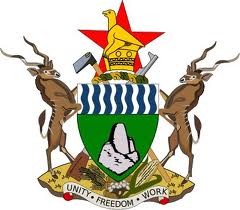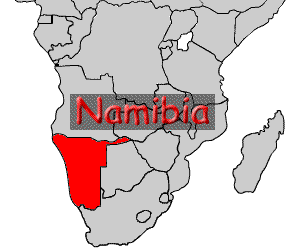 About Zimbabwe
About Zimbabwe
Our PeopleThe last census indicated that Zimbabwe had a population of 13,5 million. The population density is approximately 16 per square kilometre. With an annual growth rate of 3,14 percent, Zimbabwe's population is estimated at 13,5 million. Shona and Ndebele are the two major indigenous languages while English is the commercial language. |
Our LandZimbabwe is situated in south central Africa between the Limpopo and Zambezi rivers. Bounded by Zambia to the north and northwest, by South Africa to the south, by Mozambique to the east and north-east and by Botswana to the south-west, Zimbabwe lies wholly to the north of the tropic of Capricorn. It is part of the great plateau, which is major feature of the geography of the southern African region. The area of Zimbabwe is 390245 square km. Almost the whole of the country lies more than 300m above sea level. |
Our ConstitutionThe Constitution is the supreme law of Zimbabwe and if any other law is inconsistent with the Constitution, the other law shall, to the extent of that inconsistency, be void. The President is the Head of State, Head of Government and Commander in Chief of Defence Forces and is elected directly by voters registered on the common roll. The President holds office for a period of five years and may be elected for further terms of office. The legislative authority of Zimbabwe vests in the Legislature which consists of the President and a Bicameral Parliament. The Parliament of Zimbabwe consists of 210 members, all whom are elected by voters registered on the common role. Ten are Provincial Governors who are ex-officio Members of Parliament, ten are traditional chiefs and twelve are appointed by the President. Parliament has a maximum life of five years. The third pillar of Zimbabwe's democracy is the Judiciary which is headed by the Chief Justice |
Our EconomyAgriculture is the backbone of Zimbabwe's economy and will continue to be so in the long tterm future. The sector provides employment for some 70% of the population and contributes between 11 and 14 percent of GDP. Recent droughts have caused the agricultural sector to experience crop failures and livestock loss, thus undermining the economy's overall growth. Zimbabwe's manufacturing sector is one of the most developed and diversified in Africa producing more than 8000 different products, the manufacturing sector contributes about 25% to the Gross Domestic Product. The mining industry plays a major role in the country's economy contributing 4 percent to the country's GDP and 6 percent to employment. It is the second largest major foreign exchange earner after agriculture and contributes about 13% of the economy's foreign exchange earnings. Zimbabwe has the world's largest high grade chromite resources base and the second largest deposits of platinum group metals. Significant reserves of gold, copper, nickel, coal and asbestos can also be found in the country. |
Our ClimateNature has given Zimbabwe one of the finest climates in the world which is warm without being oppressive and with a daily average sunshine ranging from four to ten hours all year round. Generally the days are bright and sunny, while the nights are cool and clear. November to April are summer months (rainy season) while winter is from May to July. Winter is generally dry. |
Our WildlifeThe magnificent spectacle of Africa's wildlife is another factor in Zimbabwe's tourist success. No one can fail to be moved or excited by the sight of a herd of elephants moving with a ponderous grace to a waterhole, or rolling in mud-baths like children at play; a lion moving stealthily in pursuit of its prey, herd of skittish wildbeast of neat zebra, or the seesaw gallop of giraffe. The 'Big Five' i.e. elephant, buffalo, lion, leopard and rhinoceros can all be seen in their natural habitats in the country. As one of the progressive countries in Africa in the field of wildlife management, Zimbabwe has reserved 5 million hectares or 13 percent of the country's land area as parks of wildlife estates conserving one of the world's largest remaining concentrations of animal life. |
“Gradually over the years, in different, phased programmes, we have transformed that political independence which came on the 18th of April 1980 and raised it into the next step of economically empowering our people. We are not dreamers any more – we are masters of our destiny”.
-His Excellency,President,R.G.Mugabe
 |





